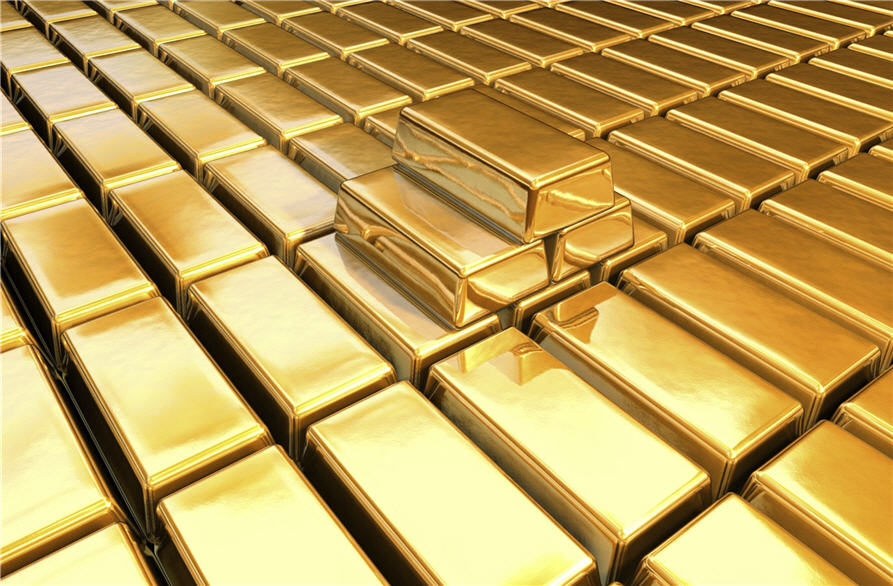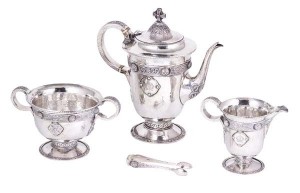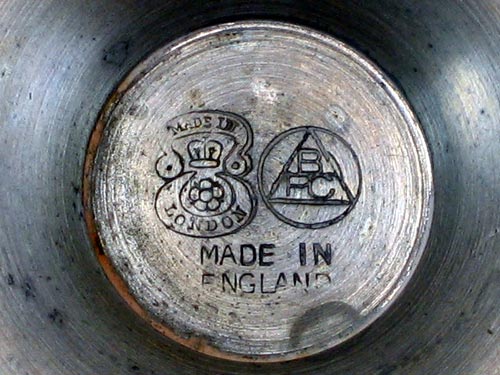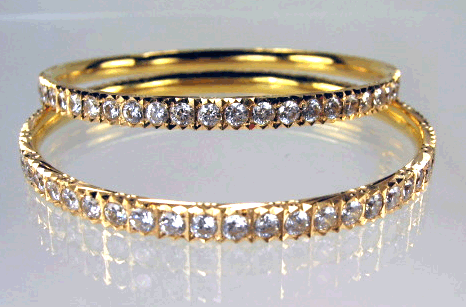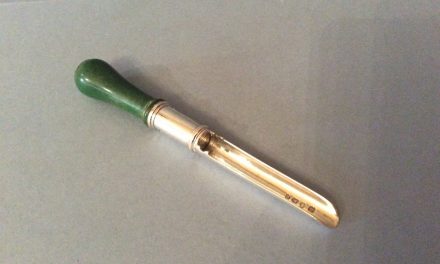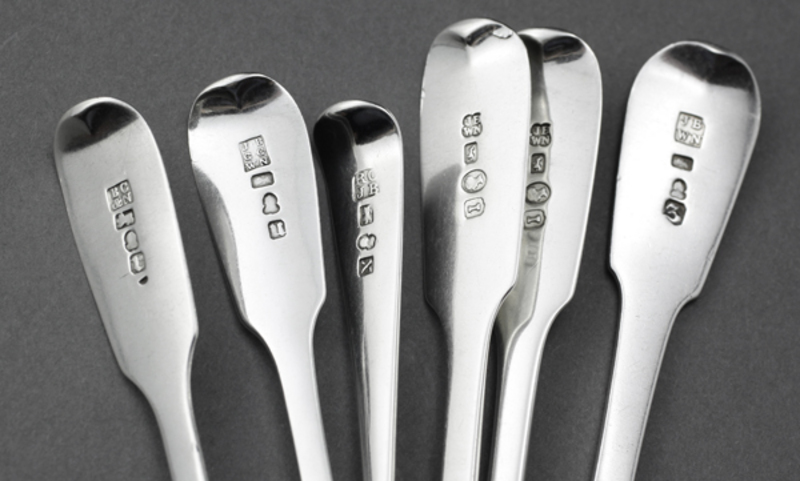Metalware
Individual metals react at different rates and in different ways to natural conditions, and their care, handling and restoration varies accordingly.
Despite their apparent toughness, metals can be scratched, dented or fractured, or may corrode. If metals are combined with other materials, as in jewellery or furniture, care must be adapted to the weaker materials. If possible, detach the metal parts and clean them separately.
General Cleaning
Cover the working surface with a soft clean cloth, and wear cotton gloves, as fingerprints can leave deposits which cause tarnishing. Before cleaning, check for loose parts or splits in the metal. Proprietary metal polishes should be used as little as possible as they actually remove a small amount of metal. Regular dusting with a soft cloth, and a soft-bristled brush for awkward crevices, reduces the need for major cleaning. For grime or light tarnish, metals apart from bronze and iron can be washed in warm water and a little mild liquid detergent, but only immerse objects if they are all-metal, with no weaker materials; cotton buds are useful for cleaning small areas. Rinse the articles and dry thoroughly with absorbent paper. Never put precious metal objects in a dishwasher as the salts and detergents may pit and stain the surface.
For heavier-duty cleaning on silver, brass and copper only, you can use long-term metal polishes which have a built-in tarnish inhibitor that reduces the need for frequent cleaning. First of all, use a soft brush to remove dust and dirt which could scratch the surface if rubbed in; do not be tempted to dislodge stubborn stains from any metal with wore wool or and abrasive cloth, which could scratch the surface. Apply the cleaner with a cloth or soft brush in a gentle circular movement. Rinse and dry the item at once with an absorbent paper towel, and remove polish from crevices with a dry, soft brush
Silver, copper and brass can be sealed against corrosion with lacquer, but this not only deprives an object of a sometimes desirable patina, but the lacquer is easily scratched and marked by fingerprints, and can soon look patchy. A light coating of microcrystalline wax applied after cleaning is an effective and less radical barrier. Lacquer is worth considering for display items with intricate decoration which would wear away with too much cleaning.
Silver
To reduce tarnishing on silverthat is not on display, wrap it up in acid-free tissue or undyed cotton or linen. Sulphurous foods such as egg and Brussels sprouts cause tarnishing, so the sooner the table silver is washed after contact with them, the better.
Tarnishing is not actually harmful to silver, but over-zealous cleaning is, and with a plated object, for example, will expose the base metal core. Metal polishes should be avoided on pieces that are worn, on clocks or watches (where they could seep into the mechanism) or on niello work. Silver or jeweller’s cloths and silver dip (which can be wiped on large objects with cotton wool swabs) or foam, are the least abrasive cleaners. Limit the number of items treated per jar dip, as particles of silver from cleaned objects can give items dipped subsequently an unsightly deposit that is difficult to remove.
Silver which contains a large proportion of copper may corrode if it has been in a damp atmosphere, causing a green crystalline deposit. This verdigris may be wiped off plated silver with a methylated spirits, but if it appears on solid silver it should be chemically treated by a metal conservator.
Worn electroplate can be resilvered, either professionally or using a proprietary replating agent. The attractions of a bright new surface, however, must be balanced against the possibilities that finish and colour may not be true to the original and the sharpness of any engraved decoration may be dulled. The process may well devalue an antique piece , particularly in the case of Old Sheffield plate.
Gold
Establish whether a gold object is solid or plated, silver gilt, or ormolu, for gold is soft, and the thinner the layer, the more easily it will be rubbed away. Gold also scratches easily, but does not tarnish unless it has a high silver content (as in some 9ct gold). Light dusting should be enough, but gold objects can be washed as long as no weaker materials such as porous gemstones are present.
Copper and Brass
The patina which forms naturally on brass and copper is a sought-after and valuable asset on some antique pieces(brass carriage clocks, for example), and such pieces should never be cleaned with metal polishes. Copper tarnishes to brown and corrodes to a relatively stable green patinas; brass eventually acquires a matt, greenish-brown surface. Both metals scratch easily. Regular, light burnishing with a soft cloth or chamois should be adequate, or use a long-term silver cloth for light tarnishing. For heavier stains, long-term brass and copper cleaners or impregnated wadding can be used.
Pewter
Pewter iseasily dented and scratched. Old pewter has a high lead content which reacts and corrodes more quickly in acid conditions, so avoid keeping the metal in oak furniture which is particularly acid, and always wrap in acid-free materials for long-term storage.
Whether pewter should be allowed to develop a matt, tarnished surface or polished to a silvery finish is debatable. A dull gleam induced by regular, light buffing with a dry cloth is a good compromise. If the surface is heavily stained or very dull, try gently wiping it with a rag impregnated with linseed oil and talcum powder; remove this mixture using cotton-wool swabs moistened with methylated spirits, and then wash, rinse and dry thoroughly. If warty spots or powdery corrosion appear (caused by lead reacting with acids in the atmosphere), pewter should be treated by a metal conservator.
Iron and Steel
If exposed to damp, iron and steel rust rapidly, and with then pit, flake and eventually disintegrate completely. cast and wrought iron can be given a barrier coating of paint or graphite, but overpainting the original finish may reduce value. A microcrystalline wax or light penetrating oil are also suitable for steel. Bear in mind that direct heat cracks paint, so iron grates and firebacks in use should be black leaded.
Before cleaning iron or steel, make sure the metal is absolutely dry. If the object is tough enough, remove loose rust and paint with wire wool or a wire brush followed by a commercial rust remover or wire wool soaked in paraffin. Wipe clean and dry thoroughly, then coat with rust inhibitor.
Remove minor rust spots with a mild abrasive cloth and a few drops of a light penetrating oil, or gently scrape them off with a scalpel. Methylated spirits or white spirit are also useful cleaning agents. Severe rusting needs professional treatment, such as sandblasting or chemical stripping to restore the surface to a good metal which can then be given a protective coating.

